
Myanmar's Junta In A Serious But Not Desperate Fight
Born of Europe's 19th century wars, it was a quip that neatly captured the difference between the hard-boiled Prussians of the north German plain and the fun-loving Viennese of the Austro-Hungarian Empire: the Prussian says the situation is serious but not desperate; the Viennese says it's desperate but not serious.
Which of today's Southeast Asian militaries would be most at home in the old Hapsburg capital is a matter of debate. But there should be no doubt that Myanmar's military is stamped entirely in the Prussian mold.
Much as Western and some local pundits have deployed the word in recent commentary,“desperate” in the face of adversity is simply not in the DNA of the Myanmar armed forces, or Tatmadaw, that seized power in Naypyidaw early last year and has every intention of continuing to steer the nation's destiny.
Indeed, the response of the military's ruling State Administration Council (SAC) junta to challenges its leaders would undoubtedly view as more serious than anything faced in six decades of army rule needs to be recognized for what it is: a display of defiant resolve, a doubling-down on base-line political positions and an unwavering determination to crush popular revolt – all underpinned by a remarkable level of internal cohesion and discipline.
The SAC's current intransigence is arguably grounded in at least two mindsets. At a day-to-day level, it is almost certainly fueled by the insulation of the“command bubble” – the intrinsic disconnect between a military high command directing strategy on big maps in air-conditioned war rooms and subordinate elements mired in the mud and blood of combat in the field.
Rigidly hierarchical militaries such as Myanmar's, where bad news travels up the chain of command usually slowly and sometimes not at all, only exacerbate that separation and the distorted – even delusional – perceptions it can breed.
At a sub-conscious and undoubtedly more dangerous level is a deeply ingrained mindset peculiar to Myanmar's armed forces in which the centrality of the military to the state makes it all but impossible to conceive of strategic retreat, let alone outright defeat.
Throughout the military's ruling caste from the senior echelons of the officer corps to rank-and-file infantrymen is an unblinking assumption that there can be no Myanmar without the Tatmadaw; indeed, that in a perverse, almost mystic sense, Myanmar is the Tatmadaw.
As international pressure has mounted in recent weeks this proprietary and fundamentally xenophobic worldview has given rise at almost every turn to anger and belligerence rather than hesitancy or a willingness to compromise. Desperation is nowhere in sight inside the Tatmadaw.
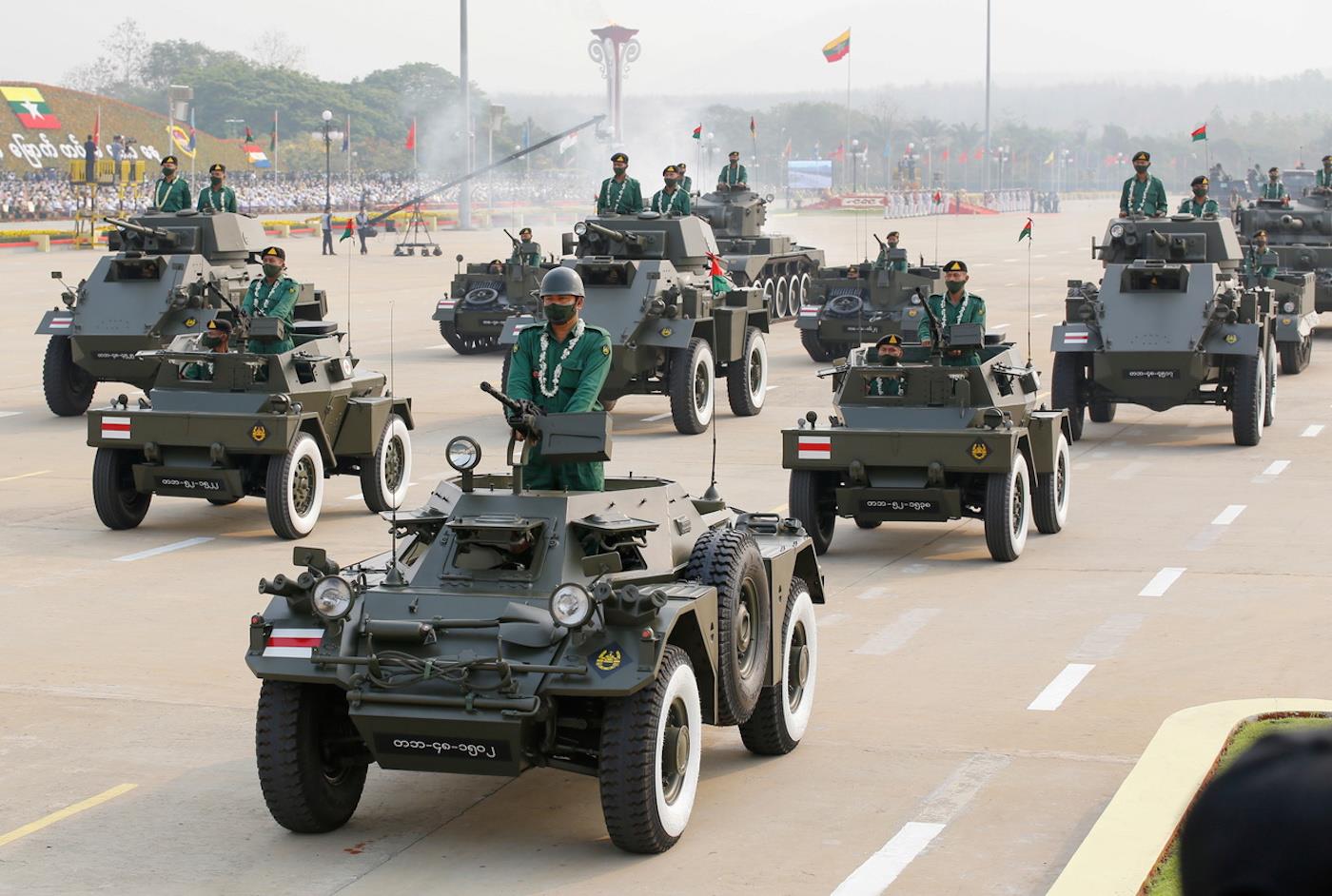
Myanmar's Tatmadaw flexes in an Armed Forces Day parade in Naypyitaw, March 27, 2021. Photo: Agencies
The SAC's response to efforts within the Association of Southeast Asian Nations (ASEAN) to push for real movement on the ill-starred Five Point Consensus of April 2021 has been dismissive, even contemptuous.
Diplomatic anger has been pointedly reinforced by defiant steps on the domestic front: the slapping of a further six-year sentence on toppled and imprisoned State Counsellor Aung San Suu Kyi, the execution of four opposition activists in the face of international consternation and appeals, and most recently the jailing of the United Kingdom's former ambassador Vicky Bowman and her husband Htein Lin on an immigration technicality.
At the international level, the SAC has been able to draw strength from high-profile recent visits from both Russian and Chinese foreign ministers, both of whose countries have pledged to support the Naypyidaw regime to weather the storm and ultimately prevail.
Preparations for elections scheduled for August 2023, meanwhile, have moved forward undeterred. Defined by the SAC as the preferred gateway to a return to“multi-party disciplined democracy” that guarantees the military a guiding role, largely unreported moves have involved the drawing up of voter registration lists and changes to the administrative map that will influence the electoral process.
The junta's resolve has been no less striking on the battlefield. Remarkably, this year the rainy season which typically imposes a marked reduction in operations between May and October might as well not be happening as the military ratchets up the war.
Despite heavier than normal rainfall brought by this year's monsoon, the operational tempo on the ground has scarcely slackened while air strikes by both Russian-built helicopter gunships and fixed-wing jets suitable for close air support (CAS) operations also increased in intensity through July and August.
Notable, too, has been the repeated resort to airmobile operations inserting small contingents of troops in Mi-17 transport helicopters supported by gunships into guerrilla-controlled territory mostly in the hard-fought western regions of Sagaing and Magway.
At the same time, the military has rolled out a new program to formalize and streamline local militia loosely known as Pyu Saw Htee into better organized and armed Peoples Security Teams (PSTs).
Drawn from pockets of traditional support such as the Myanmar Veterans Organization, the Fire Service, hardline Buddhist groups and activists from pro-military political parties, the PSTs are intended primarily to provide static security and free up regular security forces for offensive operations.
But while the generals are clearly gearing up a war that is certain to escalate in the dry season beginning at the end of the year, they are also no doubt aware of their most salient vulnerabilities in the field that the coup has only accentuated.
Undermanned and over-extended as never before, the army's effective combat units are unlikely to number much more than 100,000 men stretched across a nationwide theater of operations from Putao in the far north of Kachin state to southernmost Kawthaung on the Andaman Sea.
And far more than defections, casualties are hemorrhaging those units daily, particularly in the western and eastern regions of the country where resistance mounted by anti-regime People's Defense Forces (PDFs) and their ethnic insurgent allies is increasingly well-armed and aggressive.
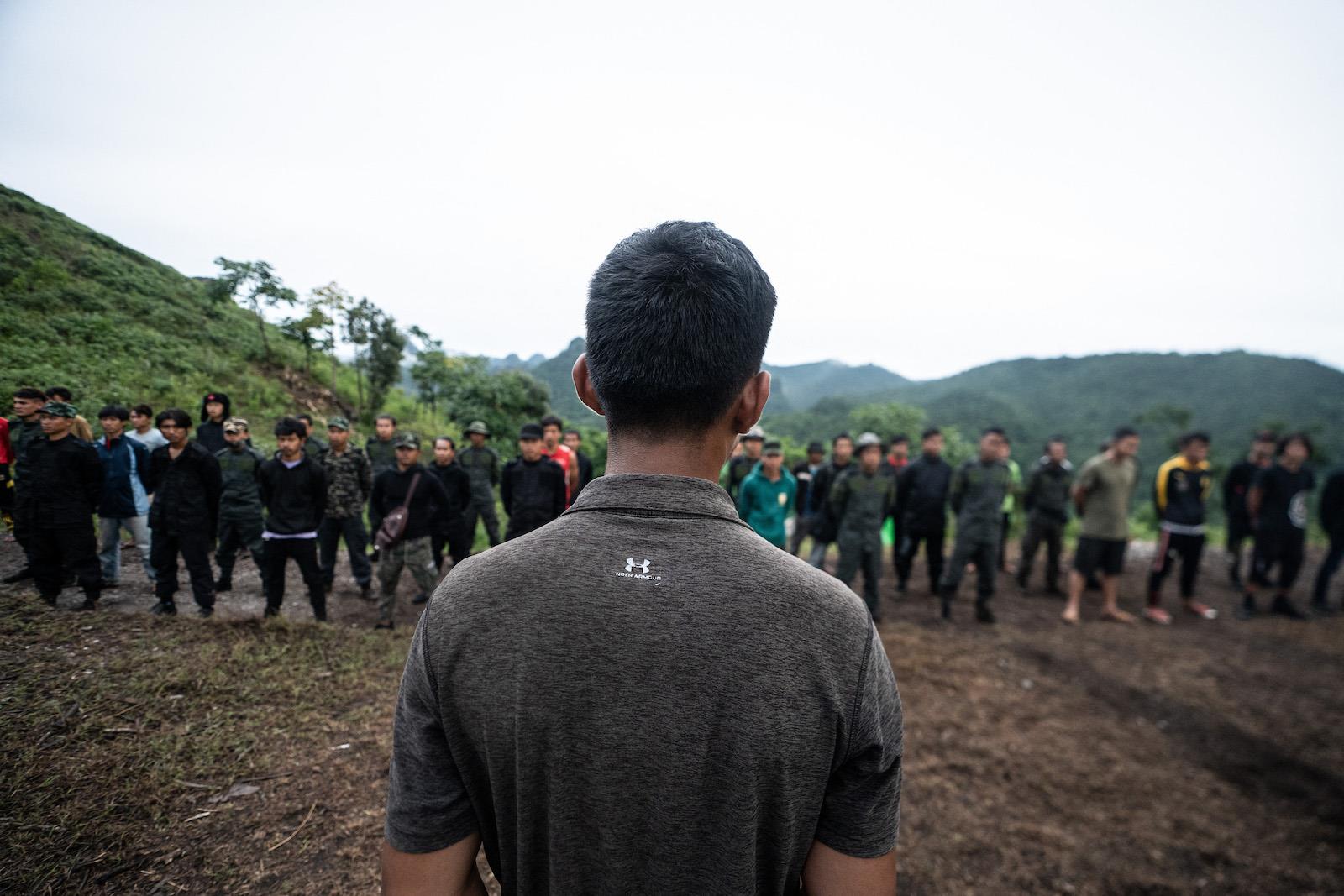
This photo taken on July 7, 2021 shows members of the Karenni People Defense Force (KPDF) taking part in military training at their camp near Demoso in Kayah state. Photo: AFP / Stringer
Wild claims from opposition sources that the security forces have lost nearly 10,000 men in the first half of 2022 can be safely dismissed as propaganda. But a sober analysis of the spread and frequency of hostilities this year suggests that on average the military is losing at least 20-25 men each day, either killed or seriously wounded.
That almost certainly conservative estimate translates to between 550 and 700 men each month – or around three to four Myanmar Army-sized battalions. Short of a regular and robust recruitment intake and efficient training regime, this level of attrition with the steady drain on morale it implies is simply not sustainable over the long term.
But as various leaked documents since last year indicate, recruitment into the regular services has dropped markedly since the coup, particularly at the critical level of junior and non-commissioned officers (NCOs), the glue that holds a combat unit together.
Whether current efforts to assemble PSTs can produce a reasonably effective urban security force capable of freeing up regular police and army battalions for the escalating war in the countryside is also a decidedly open question.
If Myanmar's recent history is any yardstick, people's militia units traditionally raised in areas of ethnic minority insurgency have never achieved any level of operational effectiveness or autonomy. It is doubtful whether hastily recruited, ill-trained PSTs in urban centers liable to daily bombings and shootings by underground resistance cells will do much better.
Yet to what extent Myanmar's opposition forces can succeed in exploiting and building on these regime vulnerabilities over the coming months is far from obvious. Broad assessments are inevitably complicated by the sheer size and diversity of the country and by the stark absence of impartial reporting from any of its battlefronts.
Two facets of the mid-2022 balance of conflict are not in doubt though. First, PDF forces have successfully survived the military onslaught during the dry season months between January and May this year, marked by campaigns of raiding and wholesale pillaging and burning of villages that swept Sagaing, northern Magway and areas of eastern Kayah State and displaced tens of thousands.
Secondly, indications have emerged during the current monsoon season that notably better-armed and coordinated PDF forces are increasingly capable of pressuring the peripheries of regime-held township centers, and occasionally conducting sustained attacks on police stations and other hardpoints inside towns.
These assaults are frequently supported by aerial bombing deploying commercially available drones to drop small munitions.
At the same time – and despite the difficulties imposed by rainfall – the use of improvised explosive devices (IEDs) to interdict road communications which began in mid-2021 has escalated sharply in recent months, most notably between key urban centers in the center and west of the country.
Matthew Arnold, one of the most perceptive independent analysts of PDF activity, notes that“the Mandalay-Monywa axis is turning into IED Avenue.”
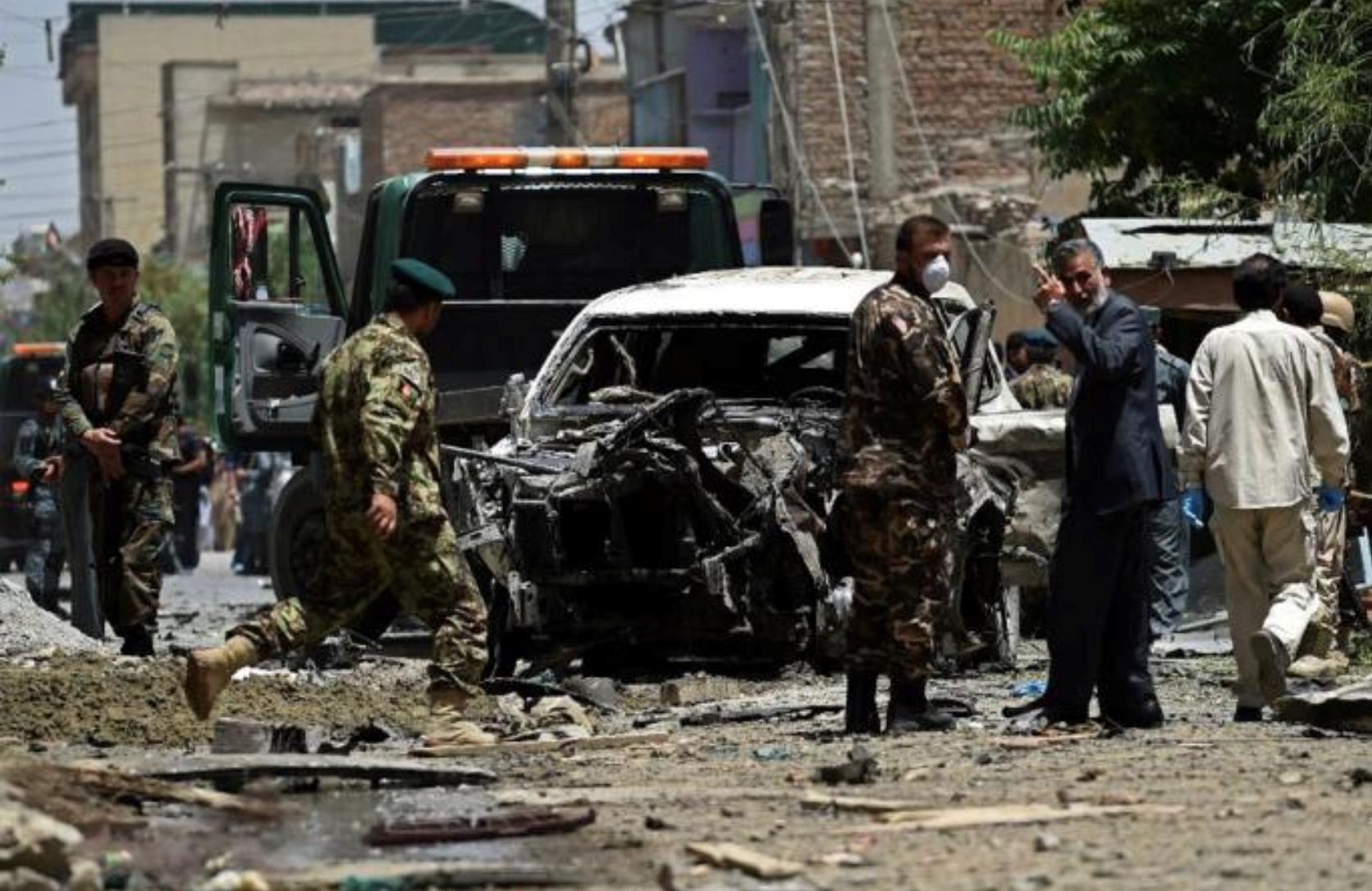
IED casualties are on the rise since last year's democracy-suspending coup in Myanmar. Photo: AFP
The near-daily struggle to hold open that avenue linking central Myanmar's largest city with the military's Northwestern Command in Sagaing has centered largely on the townships of Chaung-U and Myinmu, where even large convoys are regularly attacked and military mine disposal (EOD) teams often operate under fire.
Apparently as the result of both PDF guerrilla tactics and rain, military operations have meanwhile become increasingly static and reactive. As offensive raiding and burning targeting PDF-dominated village communities during the dry season has waned, security forces have fallen back on random harassment and interdiction (H&I) fire from dug-in artillery and, when possible, better-targeted air strikes to relieve pressure on embattled strongpoints.
Quick-fix insertions of heliborne troops supported by gunships have, as noted, also increased, but usually appear to have been responses to PDF encroachments rather than offensive thrusts aimed at carrying the war to enemy base areas.
Limited by the availability of Mi-17 transport helicopters (typically two or three per mission) and thus manpower (around 30 soldiers to each helicopter), these airmobile forays appear seldom, if ever, to deal significant blows to an elusive enemy, let alone achieve sustainable gains.
The logic of this military dynamic is compelling: it suggests that short of a major injection of fresh manpower (that is nowhere in sight) or a willingness to free up existing manpower by prioritizing certain regions over others (a stark challenge to the military's belief in its all-of-Myanmar mission), larger shifts on the battlefield may emerge sooner rather than later.
The coming year is likely to see the regime beginning to withdraw from exposed positions and possibly losing outlying townships in contested parts of Sagaing and Magway and in ethnic states on the national periphery.
Indeed, in western Rakhine and Chin states where the military's ceasefire with the powerful Arakan Army (AA) all but collapsed in August, that process appears to have already begun with the army evacuating or losing a string of embattled positions at the end of the month and able to supply others only by air.
At the same time, as“IED Avenue” between Mandalay and Monywa suggests, the regime's ability to secure key north-south communications arteries between Yangon and Naypyidaw and Mandalay and Myitkyina is also likely to emerge as a dangerous vulnerability and a further drain on manpower.
The threat is particularly real in the east of the country where elements of the Karen National Liberation Army (KNLA) have reportedly moved out of the hills to reach the Sittang River, possibly crossing it near Kyauktaga on the old highway between Yangon and Naypyidaw. (The newer motorway lies 15 kilometers further west).
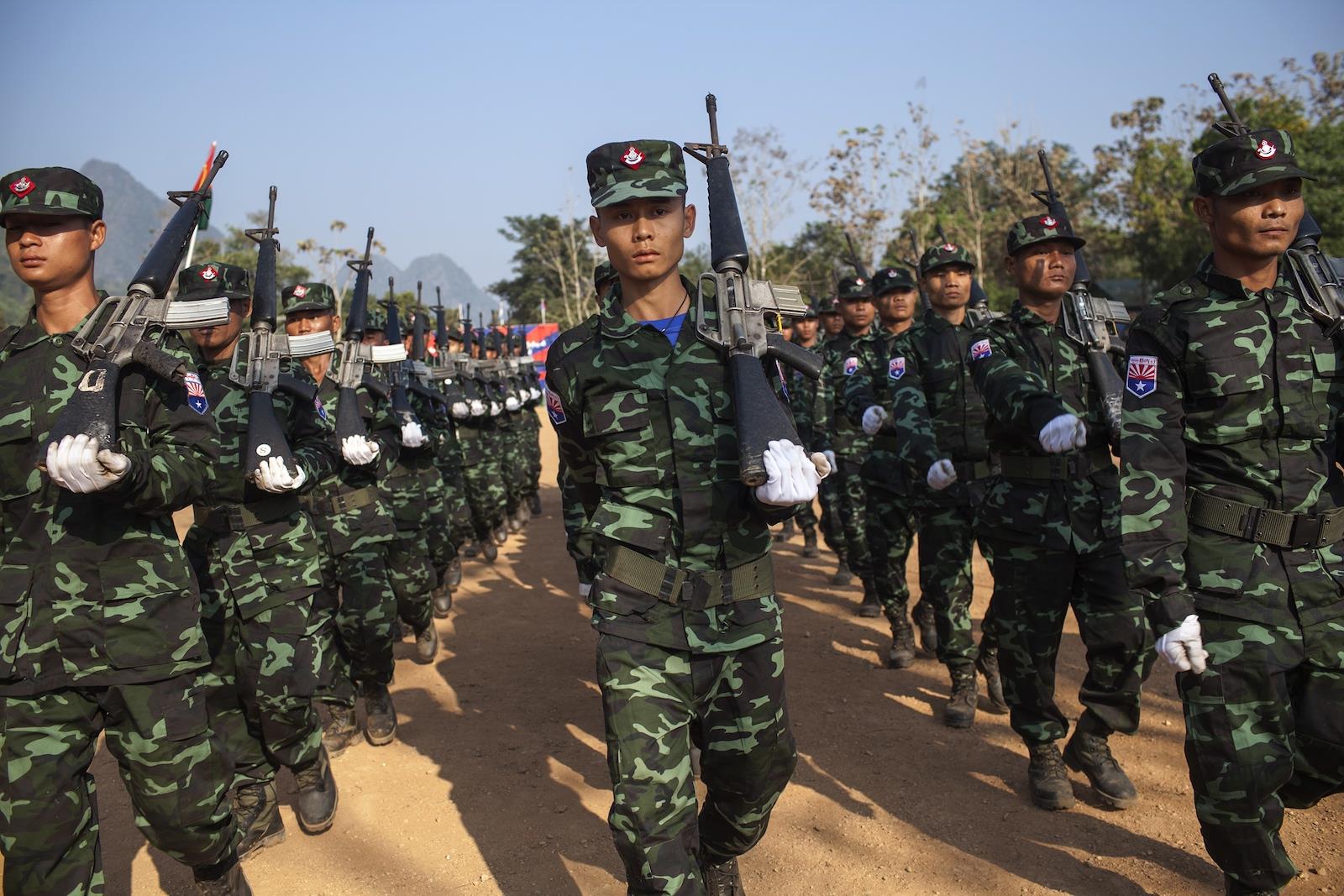
The Karen National Liberation Army (KNLA)'s Seventh Brigade parading as part of celebrations marking the 66th Karen Revolution Day at their headquarters in Myanmar's eastern Kayin state in a 2015 file photo. Photo: AFP / KC Ortiz
Any capacity by the KNLA and allied PDFs to operate on the west bank of the Sittang not only elevates the threat to north-south road and rail links but also implies an ability over time to establish bases in the Bago Yoma, the strategically critical spine of mountains that bisects central Myanmar.
Meanwhile in northeastern parts of Sagaing and adjacent southern townships in Kachin state, holding open the main highway and rail line to Myitkyina for military traffic is already a daily struggle that has forced a growing regime reliance on riverine convoys up the Irrawaddy. These, too, come under regular rocket fire from joint Kachin Independence Army (KIA) and PDF forces operating along the riverbanks.
Viewed strategically, these emerging challenges confronting Myanmar's military junta represent a sea change set against the situation only a year ago, when the survivability of still fledgling PDFs in the face of overwhelming army firepower was in real doubt.
For at least the coming year, however, Myanmar's escalating civil war will likely remain in the balance. As the military struggles to contain an array of growing threats on multiple fronts, it will continue to hold two crucial and interlocking advantages that resistance forces still lack and will almost certainly be unable to achieve: unity of command and unity of strategy backed by an instinctive and very Prussian determination to fight.
But whether these will be enough for the Tatmadaw to stem the rising onslaught remains anything but clear.

Legal Disclaimer:
MENAFN provides the
information “as is” without warranty of any kind. We do not accept
any responsibility or liability for the accuracy, content, images,
videos, licenses, completeness, legality, or reliability of the information
contained in this article. If you have any complaints or copyright
issues related to this article, kindly contact the provider above.

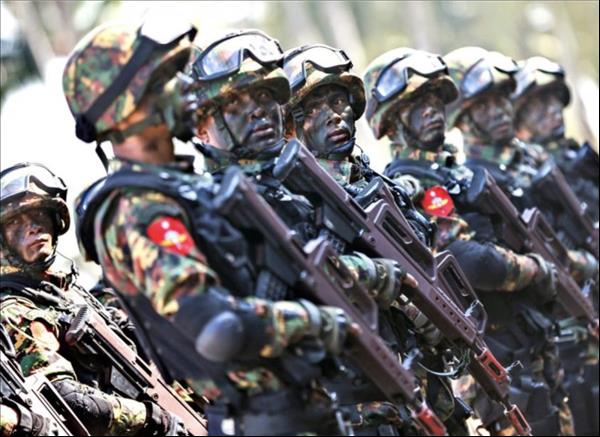
















Comments
No comment